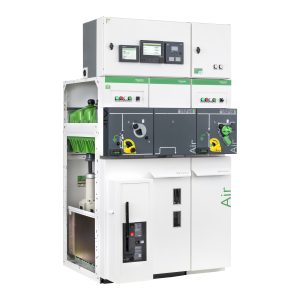Switchgear is an integral part of an electric power system. The term includes fuses, switches, relays, isolators, circuit breaker, potential and current transformer, indicating device, lightning arresters, etc. that protects electrical hardware from faulty conditions.
Let us find out more about by understanding how it works and what are its different types.
What is switchgear?
Electrical switchgear is connected to electric supply systems and is used in both low and high voltage power transformers. Its purpose is to de-energise set up for maintenance and repair to correct the faulty issues. Every time there is a defect in the power system, like a short circuit, a massive current flows through the electric setup, which is damaging to the structure and also causes supply disruption to the users. It is crucial to ensure optimal electrical protection.
Examples include circuit breakers, fuses, disconnect switches, and relays. These devices safeguard electrical systems from overloads, short circuits, and other faults.
How does switchgear work?
Automated protective switchgear consists of a relay and circuit breaker. The relay acts whenever there is a fault. The relay closes the faulty circuit and disconnects the disrupted line. This ensures that the appliances do not get damaged and there is an uninterrupted supply of power. Relays provide that the faulty part remains isolated while the healthy part continues to function as usual.
Difference between switchgear and switchboards
Switchgear typically refers to the combination of electrical disconnect switches, fuses, or circuit breakers used to control, protect, and isolate electrical equipment, while switchboards are specifically panels containing switches and other controls for distributing electricity within a building or facility.
Benefits of switchgear
- Boosts reliability: Switchgear ensures undisturbed interconnectivity and a higher capacity of generating stations. It enhances reliability as it separates faulty sections of the circuit in the case of malfunction.
- Swift response: In the case of a malfunction in the circuit, the switchgear counters quickly to prevent the damage from spreading into the healthy parts. Thus, it helps in preventing a complete shutdown of the circuit.
- Physical control ability: Switchgears also have the ability to offer hand-held operations in case of a fault of electrical control.
- Absolute differentiation: Switchgear can alter between functioning and nonfunctioning parts in a circuit. Because of this, it can then separate the non functioning components to ensure an uncompromised power supply.
Types of switchgear

There are different types of switchgear, differentiated on their voltage levels. The three categories are:
- High Voltage (HV) Switchgear
- Medium Voltage (MV) Switchgear
- Low Voltage (LV) Switchgear
Features of LV switchgear
This switchgear has capacities up to 1 kV. Hence, the term LV switchgear collectively includes low voltage circuit breakers, offload electrical isolators, earth leakage circuit breakers, switches, miniature circuit breakers (MCB), moulded case circuit breakers (MCCB), and H.R.C. fuses. LV switchgear is present in the LV distribution board. It consists of incomers, sub-incomer, and feeders.
LV switchgear facilitates protecting parts of the circuit against mechanical and thermal distress. It separates faulty parts while ensuring safety and offers operational control of remote and local switching.
Features of MV switchgear
An MV switchgear can operate between 3kv to 36 kV. There are numerous types of MV switchgear like metal-enclosed indoor type, metal-enclosed outdoor type, etc. This type of switchgear uses S.F. (sulfur hexafluoride), oil and vacuum for blocking current in case of faults.
MV switchgear operates tasks like interrupting short circuit current, switching capacitive winds and inductive currents, performing the usual on/off switching function, etc.
Switchgears are extensively used in industrial setups for smooth power distribution. They are found in solar power generation plants and residential complexes as well.
Understanding switchgear insulation types
- Air-insulated switchgear (AIS) employs ambient air for insulation, offering simplicity and affordability in smaller installations where space is not a constraint.
- Gas-insulated switchgear (GIS) utilises SF6 gas, and can be used for compact installations with high voltage requirements.
- Hybrid switchgear merges air and SF6 gas insulation, delivering enhanced performance and versatility suitable for diverse electrical infrastructure applications.
Schneider Electric India has an extensive range of excellent quality switchgear, voltage transformer, power transformer, etc., for residential and industrial uses at a reasonable cost. They also offer after-sales support services.




Conversation
The information is educative
Thank you Ali.